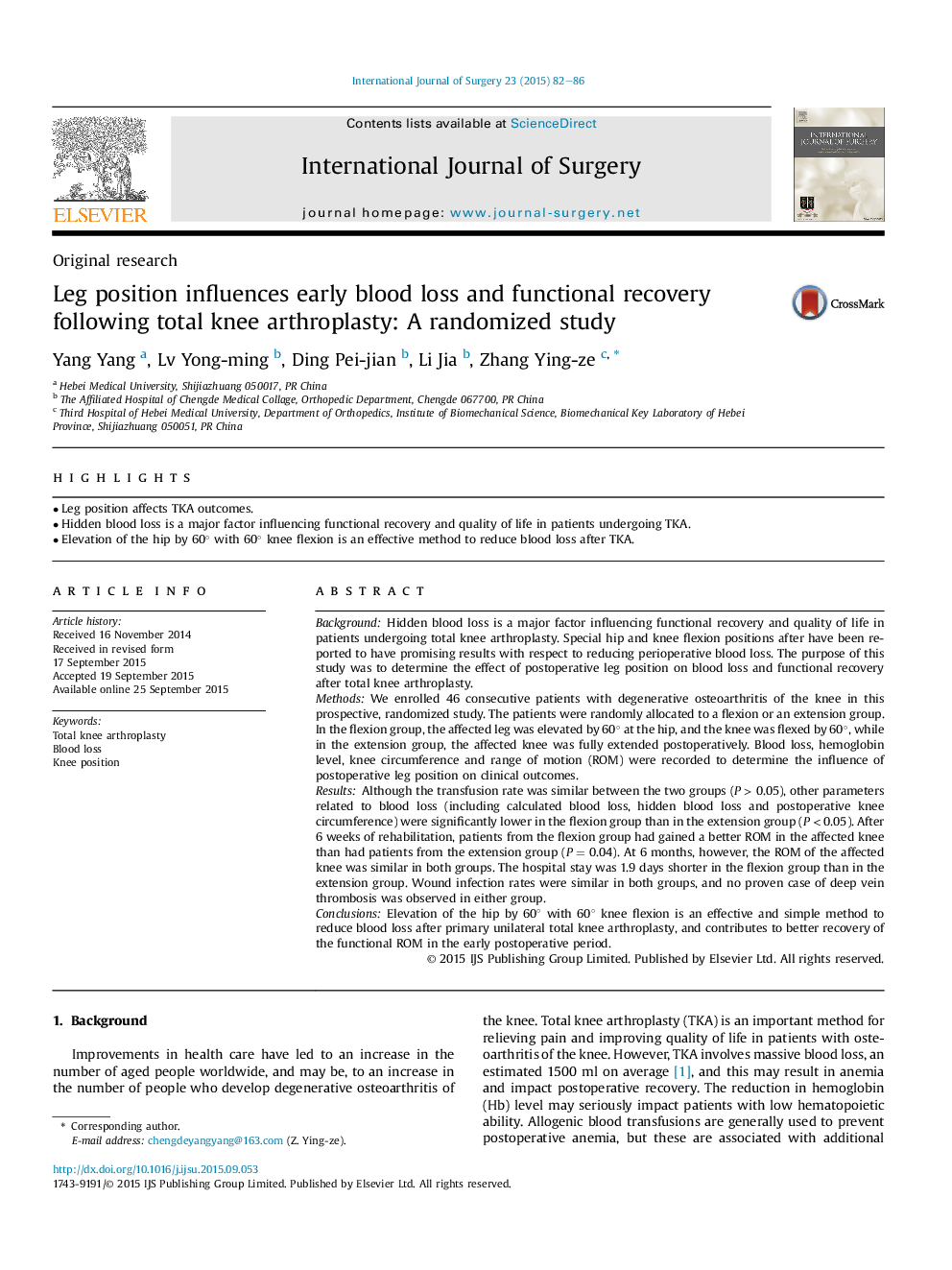| کد مقاله | کد نشریه | سال انتشار | مقاله انگلیسی | نسخه تمام متن |
|---|---|---|---|---|
| 6251254 | 1611968 | 2015 | 5 صفحه PDF | دانلود رایگان |
- Leg position affects TKA outcomes.
- Hidden blood loss is a major factor influencing functional recovery and quality of life in patients undergoing TKA.
- Elevation of the hip by 60° with 60° knee flexion is an effective method to reduce blood loss after TKA.
BackgroundHidden blood loss is a major factor influencing functional recovery and quality of life in patients undergoing total knee arthroplasty. Special hip and knee flexion positions after have been reported to have promising results with respect to reducing perioperative blood loss. The purpose of this study was to determine the effect of postoperative leg position on blood loss and functional recovery after total knee arthroplasty.MethodsWe enrolled 46 consecutive patients with degenerative osteoarthritis of the knee in this prospective, randomized study. The patients were randomly allocated to a flexion or an extension group. In the flexion group, the affected leg was elevated by 60° at the hip, and the knee was flexed by 60°, while in the extension group, the affected knee was fully extended postoperatively. Blood loss, hemoglobin level, knee circumference and range of motion (ROM) were recorded to determine the influence of postoperative leg position on clinical outcomes.ResultsAlthough the transfusion rate was similar between the two groups (P > 0.05), other parameters related to blood loss (including calculated blood loss, hidden blood loss and postoperative knee circumference) were significantly lower in the flexion group than in the extension group (P < 0.05). After 6 weeks of rehabilitation, patients from the flexion group had gained a better ROM in the affected knee than had patients from the extension group (P = 0.04). At 6 months, however, the ROM of the affected knee was similar in both groups. The hospital stay was 1.9 days shorter in the flexion group than in the extension group. Wound infection rates were similar in both groups, and no proven case of deep vein thrombosis was observed in either group.ConclusionsElevation of the hip by 60° with 60° knee flexion is an effective and simple method to reduce blood loss after primary unilateral total knee arthroplasty, and contributes to better recovery of the functional ROM in the early postoperative period.
Journal: International Journal of Surgery - Volume 23, Part A, November 2015, Pages 82-86
